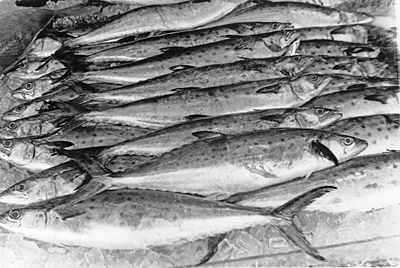All Nonfiction
- Bullying
- Books
- Academic
- Author Interviews
- Celebrity interviews
- College Articles
- College Essays
- Educator of the Year
- Heroes
- Interviews
- Memoir
- Personal Experience
- Sports
- Travel & Culture
All Opinions
- Bullying
- Current Events / Politics
- Discrimination
- Drugs / Alcohol / Smoking
- Entertainment / Celebrities
- Environment
- Love / Relationships
- Movies / Music / TV
- Pop Culture / Trends
- School / College
- Social Issues / Civics
- Spirituality / Religion
- Sports / Hobbies
All Hot Topics
- Bullying
- Community Service
- Environment
- Health
- Letters to the Editor
- Pride & Prejudice
- What Matters
- Back
Summer Guide
- Program Links
- Program Reviews
- Back
College Guide
- College Links
- College Reviews
- College Essays
- College Articles
- Back
You are unknowingly killing marine wildlife, and here’s why
I have grown up visiting countries around the world and looking at gorgeous wildlife; this is why I wanted to raise awareness about sunscreen; sunscreen is extremely harmful to the environment, especially when it ends up in water systems or protected marine areas. Due to fake branding; people could think that their sunscreen isn’t doing any harm but in truth, it is killing hundreds of wild animals.
Sunscreen is an international business; being bought and used in almost every single country around the world. One of its biggest consumers is? Tourists. Now I’m not writing this to go after tourists for deciding to protect their skin, but because they wear brands of sunscreen like Neutrogena and La Roche, they are unknowingly killing reefs and animals.
The National Academies of Sciences, Engineering, and Medicine recently researched the “Environmental Impact of Currently Marketed Sunscreens and Potential Human Impacts of Changes in Sunscreen Usage” and concluded that most sunscreens contain two harmful ingredients: oxybenzone and benzophenone. These two chemicals were found to be significantly harmful to marine wildlife, and have been the cause of mass decreases in numerous famous reefs in the world.
I know what you are about to say, “But it’s only a little bit entering the water”.actually, it’s not, because these tourist places have hundreds upon thousands of tourists visiting them EVERY day; if the average person were to wear 3 millilitres of sunscreen on average, that’s 300,000 millilitres of sunscreen entering the water. If we take one of the most popular sunscreens used; La Roche-Posay Anthelios 60 Melt-In Sunscreen Milk, which contains 3.86 percent oxybenzone per 100 millilitres; that is 77720.2 millilitres of oxybenzone in the water.
You may be wondering, “if we can’t wear sunscreen because of those chemicals what should we do?”.Well, there are two different types of sunscreen:chemical-based sunscreen and mineral-based sunscreen. Chemical-based sunscreen is the type that contains oxybenzone and benzophenone. According to the Environmental Working Group (EWG) “Mineral sunscreens are made with titanium dioxide and zinc oxide, usually in the form of nanoparticles. The FDA proposed that both titanium dioxide and zinc oxide be classified as safe and effective.” This means that mineral sunscreen will not harm the marine wildlife.
Mineral Sunscreen is also safer for us humans because according to recent research, chemical sunscreen can enter your bloodstream by absorbing through your skin. Mineral sunscreen is safer on many levels; it cant enter your bloodstream and it’s safe for the environment; two things chemical sunscreen is not.
In conclusion, people should stop using chemical sunscreen when there are safer options available that will not harm the wildlife or you. and I ask you as consumers to take these points into account and try to look for alternative ways to make your sunscreen that won’t harm the environment.

Similar Articles
JOIN THE DISCUSSION
This article has 0 comments.
